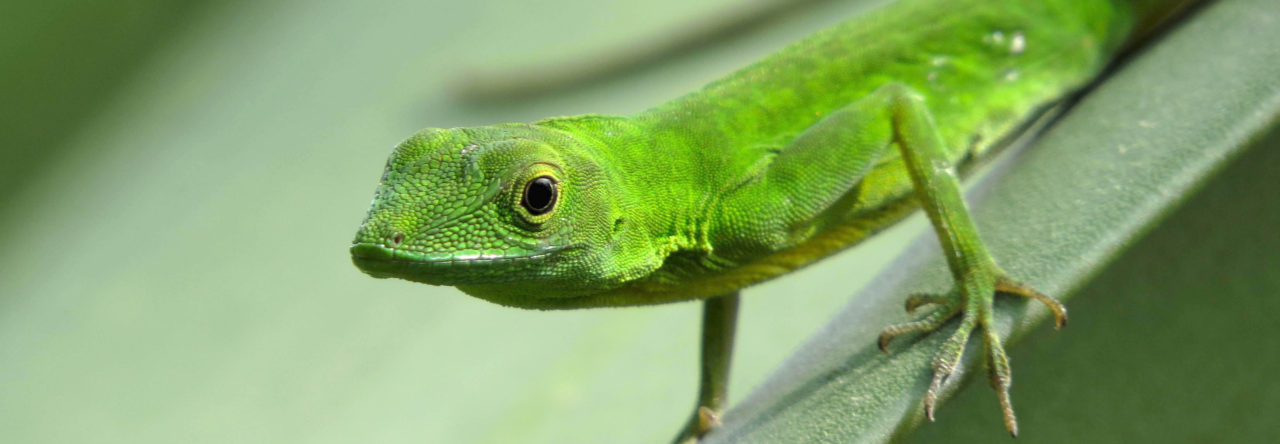
A. cybotes juvenile. Photo courtesy of Thom Sanger
Apologies for the messiness of the formatting; this is my first blog post, and it only got here with a lot of technical support from JLo! History is full of examples of the little guy getting left behind. Unfortunately, so is the study of anoles. Most anole studies focus on adult lizards, and while there is certainly much to be learned from adult-focused studies, to ignore juveniles is to cheat ourselves of a great opportunity to better understand Anolis life history.

A. cybotes juvenile. Photo courtesy of Thom Sanger.
As readers of this blog likely appreciate, anoles are a model system for understanding evolution. To gain a comprehensive understanding of the factors that led to their stunning diversity, it’s important that we understand how selection acted upon these lizards at all stages of life – not just adulthood. A lizard has to survive from hatchling to reach adulthood and until we know more about how juveniles interact with their environment we cannot determine whether selection has shaped the juvenile stages with the same intensity as it has adult traits.
Thom Sanger wrote an earlier post that discussed the growth of Anolis limb length: “Growing Limbs – But Not the Kind With Leaves.” According to his post, variation in adult limb morphology can be traced “all the way back to the point in development when the cartilaginous long bone anlagen are just forming.”
This past summer, I worked with Thom, Michele Johnson (Trinity University), and Trinity undergraduates Ellee Cook and Diego Castro to study the morphology and behavior of juveniles on grounds of the Coral Sol Resort in Barahona, Dominican Republic. My goal was to understand whether juvenile lizards behave similarly to adults and whether juveniles have the same body proportions as adults.
Read More







 Check out what Janson Jones has to say about the largest anole, as well as a cool video,
Check out what Janson Jones has to say about the largest anole, as well as a cool video, 